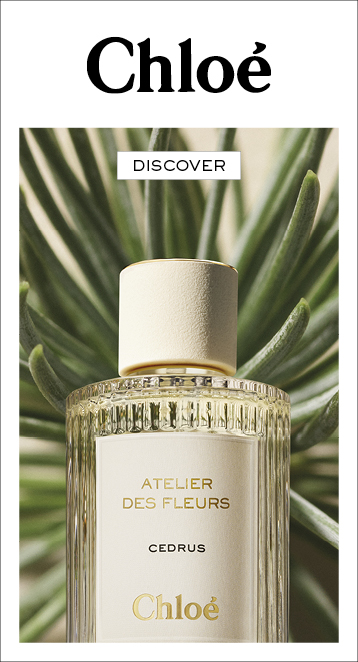During his four-year tenure as Managing Director of Diageo Global Travel & Middle East from 2013 to 2016, Doug Bagley earned a reputation as one of travel retail’s most astute and effective executives, one committed to genuine principles of partnership.

Amid a wide-ranging company reshuffle, which saw Diageo Global Travel’s headquarters relocated to London, Bagley opted to remain in Singapore for family reasons. Now he’s resurfaced as CEO at CIDF (formerly China International Duty Free), which describes itself as one of global travel retail’s largest independent distributors and marketing solutions providers. The company – founded in 2009 by Fred Combe and Bruce Cheung – is also the channel’s leading specialist for Chinese tobacco, with distribution that embraces over 100 key retail locations across four continents, on land and sea and in the air.
Bagley says that when Diageo opted in 2016 to relocate its Global Travel headquarters from Singapore to London the situation came as “a natural fork in the road” for both sides. With his family and professional life firmly rooted in Asia, he opted to remain in Singapore and look for an appropriate opportunity.
While examining prospects with industry players similar to Diageo, Bagley’s eye was caught by a very different proposition – an independent travel retail distribution specialist that had made its name through developing the complex Chinese tobacco category. Through offering a “one-stop category solution” to retailers, CIDF had helped solve the challenge of Chinese tobacco for its partners, in the process growing from one variant in one airport to 40+ products across 100 locations globally.
CIDF’s founders wanted to extend the sub-category execution model – based on focused knowledge, strong relationships and total execution – to new and exciting category opportunities. That desire found common ground in terms of Bagley’s capability and grounding in the travel retail channel. As a result the company has since signed a number of leading international spirits brands, developed a ‘Craft Spirits’ platform for launch later in 2017, and has brought onboard former Johnson & Johnson Asia Pacific Marketing Manager Sally Bell to head its fast-growing Health & Wellness platform.
Both new forays are focused on solving the problem of “intricate but high-growth” categories for retailers, while CIDF also continues to power forward with a range of innovations and travel retail-exclusive launches in Chinese tobacco.

Doug Bagley is settling in nicely to his brave new world with a thriving independent, practically a different universe from a big corporate like Diageo. He gets – and was attracted by – the CIDF values, and cites a track record built on the right principles.
“We’re known for innovation, creativity and excellent relationships with our brand partners and many of the travel retailers,” he says. “It’s a really nice partnership and coming to the business as CEO is something that really excites me, as we can add to the existing base by launching new, exciting initiatives in a channel I know pretty well.”
Today the company supplies a combined 100 locations around the world with an offering of 100+ SKUs, embracing tobacco, premium spirits and health & wellness products. CIDF is by far the largest supplier of Chinese tobacco in travel retail, currently representing around 70% of national Chinese tobacco brands in the channel.

One of the keys to that success has been the company’s ability to provide guidance to international retailers on consumer trends while simultaneously nurturing top domestic brands which need support to go global. Within this dual remit product innovation is a key focus, with CIDF leading its brand partners through the development, supply and marketing activation process.
Commenting on the company’s direction, Bagley says: “We will continue to lead and innovate in Chinese tobacco; this is critical to our strategy. CIDF has grown by specialising in the marketing and distribution of brands in the channel, but global travel retail-exclusive product innovation has been and will continue to be a key strategic focus as consumers seek new and different experiences and trends.” With that powerful platform, the company is extending its offer across international wines & spirits, a craft offer (mainly liquor), and health and wellness.
Extending the footprint
The CIDF liquor portfolio covers a range of “global power brands”, two of the top three brands in the Chinese baijiu category, and a range of labels in the craft spirits category that is making inroads into many domestic markets.
Baijiu is the largest spirits category in the world by volume, and the Chinese domestic market has seen a resurgence in the premium sector through 2016/17, CIDF says, with sales now surging by over +40% year-on- year. The company represents Wuliangye and Yanghe, respectively China’s second- and third-largest brands, and is planning to leverage them to reinvigorate the baijiu category – and to elevate it to its “rightful position” in travel retail.


The company has boosted its spirits portfolio recently with several leading international brands. Securing the Asian travel retail distributorship for Gruppo Campari – the sixth-largest player in the global spirits industry, with a portfolio of more than 50 premium brands – brought several key additions. These include Glen Grant single malt whisky (full range, aged up to 18yo), SKYY vodka (number two vodka brand in China) and both Campari and Aperol (the world’s most popular and fastest-growing aperitifs respectively).
The company is also pioneering an overall category approach to capitalising on the exposure and growth of craft spirits globally.
Health & Wellness – “the new affordable luxury”
The Health & Wellness category represents a “huge and growing opportunity”, CIDF says, not least because it offers incremental business to established product sectors. There are also very few allowance restrictions on quantities of vitamin and dietary supplements.
Founding principles and principals Fred Combe, Co-Founder of CIDF with Bruce Cheung, traces the company’s success back to the early days when China Tobacco was culling the number of brands it manufactured in preparation for the opening of the Chinese domestic market to imported brands. CIDF persuaded the manufacturer to allow international distribution for a number of these brands, and they flew off the shelves. “That created a trust between us and the Chinese,” says Combe. “So we said, let’s do more. And they gave us some of their bigger, more premium brands. We took our skillset and just replicated the model.” Effectively the role that CIDF plays with, say, DFS Changi is that it manages a large proportion of the Chinese tobacco category. “The respect’s been earned, not only from what’s happened with product innovation but also from our really deep insight into Chinese consumers. We know what’s happening with Chinese trends; we apply that knowledge to how we activate and manage the category, and how we develop the brands. “The buyers are comfortable with our advice,” says Combe. “They know it’s going to work and sell. And we can advise them what to offer as their whole Chinese tobacco portfolio in the shop.” Last year was the first time in 20 years that the Chinese domestic tobacco market declined in sales, falling by about -7%. Yet at the same time CIDF’s Chinese tobacco sales, driven by innovation, rose +25% year-on-year. Most of that is travel retail, although CIDF is also now handling selected domestic markets. CIDF also ensures a widely spread pricing net, from value to super premium. Last year it set a new retail pricing record with a line called Mao’s Cigarillo. Sold initially through DFS at Hong Kong International Airport (and now available in multiple locations) at US$465, it was around 15 times the price of a 200 carton of Marlboro. The brand is a recreation of the cigarillo Chairman Mao smoked in his final years. By its own admission, CIDF deliberately flew “under the radar” for years. Now the company feels it has earned its place at the industry top table, and can speak more freely. No travel retailer that has seen the explosion of Chinese tobacco sales in recent years would be inclined to disagree. |
Because it’s easy to carry, offers a high return per square foot and is suitable for all genders and ages, the category is rich in potential for travel retail, Bagley contends. “Consumers are more health conscious than ever before, with multiple points of research showing that around three-quarters of consumers are willing to pay a premium for products deemed to be healthier,” he notes.
Health, the company says, is “the new affordable luxury” for aspirational consumers from important travel-emergent demographics such as the Chinese, Indian and other Asian nationalities. Health & Wellness is now the number one product category in China for consumer spending, CIDF points out, with more than US$16 billion spent on vitamin and dietary supplements in 2015 – a doubling of the market since 2008.
With 49% category penetration in China’s Tier 1 cities, health and wellness products are set to thrive on the back of rising incomes, an ageing population, the stress of urbanisation and greater awareness of food and health issues, says Bagley. “People seriously know this category, and understand it. It’s growing at phenomenal rates, in some cases – depending on the respective segment – by +300%.
“But instead of simply putting this product on a shelf,” he asks, “how can we range it in a category solution for retailers?”
Part of the answer lies in developing exciting sub-categories, for example mānuka honey (a honey produced in New Zealand and Australia from the nectar of the mānuka tree, widely considered to have strong wellbeing qualities). CIDF claims it can provide retailers with solutions and knowledge for such opportunities “which resonate beyond what we’ve all seen before”.
“I believe travel retail can give authenticity and trust to these massive categories. We have properly trained brand ambassadors so that customers are getting the right advice, complementing the premium purchase. There are so many health supplement brands bulk-targeting consumers right now, but we only work with companies that have built up legitimacy first in their home markets. They have that kind of home-market trust.”
Reasons to believe
Bagley knows travel retail better than most; and while it has many complexities and challenges, he reckons its future is exciting. “There are still many reasons to be positive about the channel,” he says. “Pax numbers continue to increase year-on-year; shoppers remain positively predisposed to discovery in the channel; there is space and time to mentor consumers; and it remains a global shop window for brand-building, with big brand investment continuing.”
That’s the upside. But the perennial challenges of the past remain, Bagley says. Footfall remains resolutely flat despite the best efforts of retailers and suppliers, with under half of airport visitors stepping into duty free and less than 15% actually making a purchase.
In domestic markets all around the globe, consumer trends are towards experimentation, Bagley points out. Consumers are increasingly looking for something different to brands that they find on the high street – authentic, local brands, independently owned versus those from big corporations, small-batch as opposed to mass-produced, and made by artisans not machines. In a word, craft.
Is travel retail responding to such trends? Not really, says Bagley, though there are mitigating factors. “Curating and executing a product line-up to meet this consumer need is difficult for retailers,” he says. “It’s a highly fragmented space and requires a large amount of coordination with producers who, almost universally, are not capable of selling to the major operators.”
“Make it young, make it hip”
Which is where CIDF comes in. There is a “brilliant opportunity” to build and manage “consumer resonant subcategories” through genuine shopper engagement and storytelling, the company says.
That engagement will come through differentiated unique brand offerings, not just the standard global product range, allied to “brilliant” retail theatre that pushes the boundaries of retail theatre and brand activation.

“If you wind back six years ago, one in 100 launches was craft,” says Bagley. “Now it’s one in five. It’s an industry now worth 2% of the spirits category worldwide. By 2025 it’s projected to be 20%.
“Look at the demographics and the whole situation that’s going on within the liquor category in travel retail. The same issue of low penetration still plagues the business. Some 50% of travellers don’t go into stores, and of the 50% that do, 70% don’t purchase. So only 30% of this group purchase – when you work that back as a percentage, it’s only 12% penetration in liquor, which is low.
“And if you talk to Millennials, a lot of them just don’t find travel retail a channel to shop in. The question is, from an alcohol perspective, how do you start getting Millennials back into the category and interested?
“I think that what’s happening in the market now with craft is the way to address it. Make it young, make it hip, but keep it moving. Keep it agile. And then actually bring in new, interesting products – but rotate them. That’s hard to manage, because the natural strength of a retailer is not to rotate and refresh the mix so frequently. That’s where we want to come into it.
“How can we bring in a range, manage the merchandising, handle the training, manage the back office, manage the logistics, do the communication – both digitally and also in terms of physical presence – and then refresh it?”
“We’ve got access to over 100 craft brands. It’s young, hip, made by real men and women and not by machines. I think it’s exactly what the industry needs, as well as what they already do in mainstream liquor. Craft is something that keeps the category invigorated and hyped. That’s absolutely critical. No-one can really ignore the craft spirits phenomenon at the moment. And it’s going to continue.”












